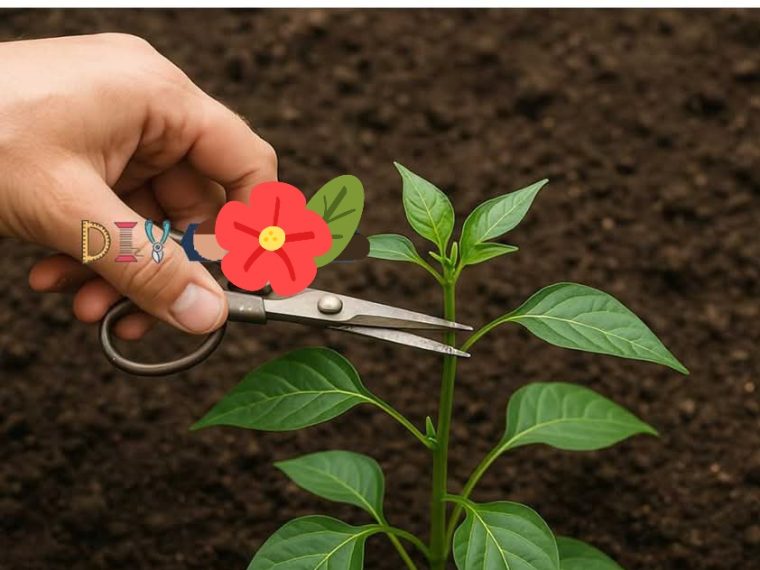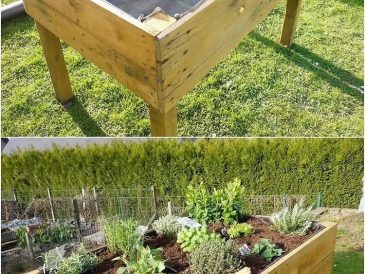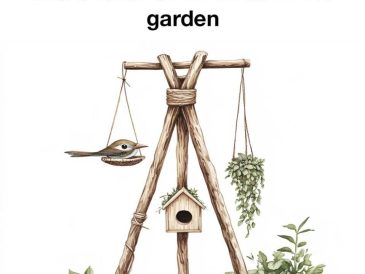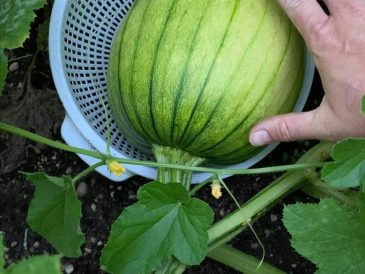Pruning is a crucial horticultural practice that can significantly impact the health and productivity of your pepper plants. While many gardeners focus on watering, fertilizing, and pest control, pruning is often overlooked. Topping, a specific type of pruning, involves cutting off the top portion of the plant. This technique might seem counterintuitive, but it can lead to a bushier plant and a more abundant harvest. By understanding the principles behind topping, gardeners can maximize their pepper plants’ potential and enjoy a more fruitful growing season.
Understanding the Benefits of Topping Pepper Plants
Topping pepper plants encourages the plant to grow more branches, which can lead to more flowers and, consequently, more peppers. When the top of the plant is removed, it stimulates the growth of lateral shoots. This results in a bushier plant with a larger surface area for photosynthesis, which can enhance the plant’s overall vigor. Additionally, a bushier plant is often more stable and less likely to topple over under the weight of its fruit. By promoting a more robust structure, topping can also improve air circulation within the plant, reducing the risk of fungal diseases.
Top Reasons to Cut Off the Tops of Your Pepper Plants
Increased Yields Through More Branching
Topping encourages the plant to produce side shoots, resulting in more branches. Each new branch has the potential to produce flowers and, ultimately, fruit. This branching effect means a single pepper plant can yield significantly more peppers over the growing season compared to an untopped plant.
Better Height Management
By cutting off the top of the main stem, you control the plant’s vertical growth. This is especially beneficial for indoor growing, small garden spaces, or raised beds where overly tall plants may become difficult to manage or shade out neighboring crops. Compact plants are also easier to inspect and harvest from without damaging the plant.
Increased Resistance to Wind and Rain
A bushier, well-branched plant has a lower center of gravity and a sturdier structure. This makes it more resistant to damage from strong winds or heavy rain, which can easily snap tall, leggy pepper plants. The denser canopy also helps the plant recover more quickly from environmental stress.
Improved Airflow and Light Penetration
Topping results in a more open and evenly spaced canopy, allowing for better airflow around the foliage. This reduces the likelihood of fungal diseases and helps ensure that light reaches more parts of the plant, which promotes overall healthier growth.
More Uniform and Aesthetically Pleasing Shape
Topped plants tend to develop into symmetrical, rounded forms. This not only looks more attractive in the garden but also contributes to a more organized and easily maintained planting layout. Uniformity is especially appreciated in ornamental or urban gardens where visual appeal is important.
Earlier Fruiting (in Some Cases)
Although it might seem counterintuitive, topping can sometimes lead to earlier fruiting by shifting the plant’s focus from vertical growth to reproductive development. The redirection of energy to lateral branches may accelerate flower formation under the right conditions.
Step-by-Step Guide to Topping Pepper Plants
Wait for the Right Time
Ensure your pepper plant is mature enough before topping. Ideally, wait until the plant has 6 to 8 true leaves, which indicates it has developed a strong enough root system to handle pruning.
Identify the Main Stem
Locate the central, vertical stem that is the primary growth point of the plant. This is where you’ll be making the cut.
Locate the Cutting Point
Find the second or third set of true leaves from the base of the plant (true leaves are the full-sized leaves that appear after the initial seedling leaves). Choose a point just above one of these sets.
Use Clean, Sharp Tools
Select a pair of sharp scissors or pruning shears, and disinfect them with rubbing alcohol or a bleach solution to prevent the spread of disease.
Make the Cut Above a Leaf Node
Cut the main stem just above a leaf node (where a leaf or branch grows from the stem). This is critical, as the nodes below the cut are where new branches will emerge.
Remove Only the Top Growth
Be careful not to remove too much of the plant. You’re only taking off the top portion to encourage bushier growth, not stunting the plant entirely.
Monitor for New Growth
After topping, observe the plant for new shoots developing from the leaf nodes below the cut. These will eventually grow into multiple main stems, increasing yield.
Adjust Care as Needed
Following the cut, make sure the plant receives:
Adequate sunlight (6–8 hours daily)
Consistent watering (keep soil moist but not soggy)
Balanced nutrients (consider a mild fertilizer to support regrowth)
Optional: Stake or Support if Needed
As the plant becomes bushier, it may need support to keep it upright and prevent breakage, especially in windy or crowded conditions.
Repeat if Desired
Once the plant recovers and new branches grow out, you can top again to further shape and control growth, though this should be done with care to avoid stressing the plant too much
Common Mistakes to Avoid When Pruning Pepper Plants
One common mistake is topping too early, before the plant has developed enough leaves to support new growth. Another mistake is cutting too low on the plant, which can stunt its growth. It’s also important to use clean tools to prevent the spread of disease. Over-pruning is another pitfall; removing too much foliage can stress the plant and reduce its ability to photosynthesize. Finally, failing to monitor the plant after topping can lead to missed opportunities for further shaping and care.
Conclusion: Enhancing Your Pepper Plant Growth
Topping your pepper plants can be a game-changer for your garden. By understanding and implementing this technique, you can encourage healthier, bushier plants that produce more fruit. While it requires a bit of effort and attention, the rewards are well worth it. By avoiding common mistakes and following best practices, you can enhance your pepper plants’ growth and enjoy a bountiful harvest. Whether you’re a seasoned gardener or a beginner, topping is a valuable tool to add to your gardening repertoire.





